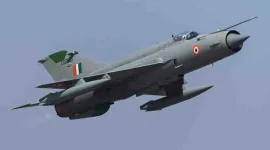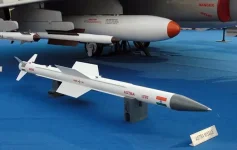- Views: 2K
- Replies: 10

The Indian Air Force (IAF), a cornerstone of India's defence strategy, has faced persistent challenges in maintaining and modernizing its fighter jet fleet over the past two decades.
Examining the acquisition patterns under two successive governments reveals a story of delays, cancellations, and a struggle to keep pace with the rapid advancements in aerial warfare technology.
From 2004 to 2014, under the United Progressive Alliance (UPA) government, the IAF ordered 122 fighter jets. These included:
- 82 Su-30MKI: These Russian-made jets were part of a long-standing acquisition program to bolster the IAF's air superiority capabilities. The Su-30MKI, with its dual-seat configuration, has become a workhorse of the IAF, known for its versatility in both air-to-air and air-to-ground roles.
- 40 LCA Tejas MK-1: This indigenous project aimed to replace the aging MiG-21 fleet. The MK-1 version represented India's initial foray into self-reliance in fighter jet production.
The National Democratic Alliance (NDA) government, led by Narendra Modi, has continued the effort to modernize the IAF, albeit with its own set of challenges and achievements. Key acquisitions from 2014 to 2024 include:
- 36 Rafale: These French jets were procured under an emergency purchase in 2016, bypassing the earlier MMRCA process. The Rafale brought cutting-edge technology to the IAF, including advanced avionics, beyond-visual-range missiles, and significant ground attack capabilities.
- 83 LCA Tejas MK-1A: An upgrade over the initial MK-1, the MK-1A variant features more advanced avionics, an Active Electronically Scanned Array (AESA) radar, and improved weaponry. This order reflects a continued push towards indigenization and self-reliance in defence manufacturing.
- 12 Su-30MKI: Additional orders for these jets were placed to replace aircraft lost in accidents and maintain the operational fleet strength.
Both decades have witnessed India struggling to maintain its fleet size and technological edge compared to regional rivals like China and Pakistan, who have aggressively modernized their air forces. This highlights the urgent need for India to streamline its acquisition processes, expedite indigenous development programs, and adopt a more strategic approach to ensure the IAF remains a potent force in the years to come.




